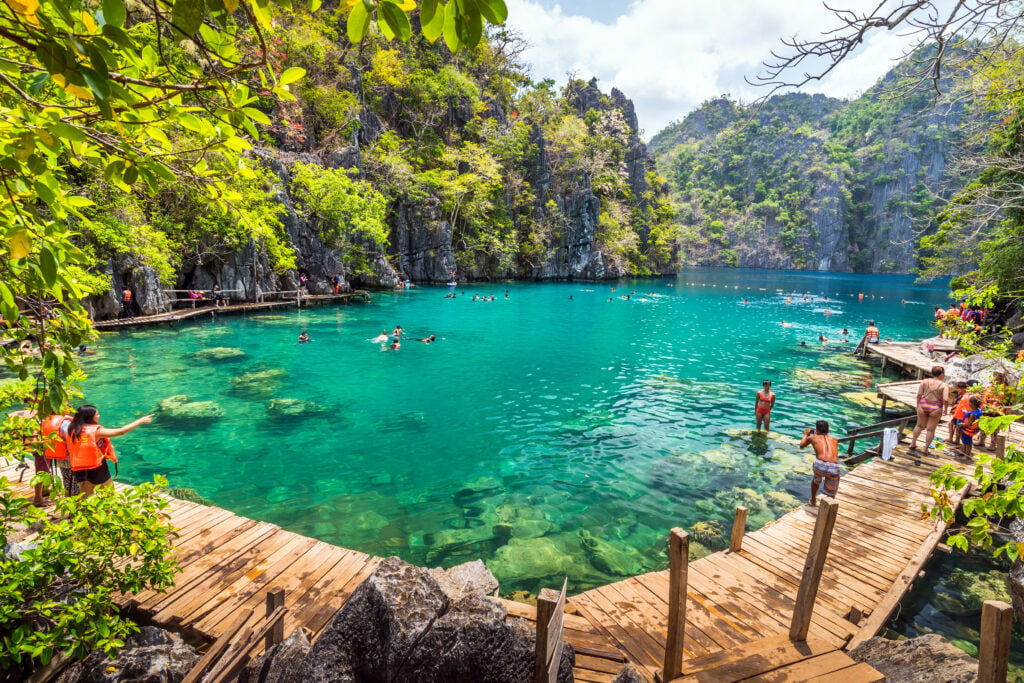
The Philippines is an archipelago of 7,107 paradise islands, nestled at the end of the world and untouched by mass tourism. Exploring the Philippines, where you can go in winter, means immersing yourself in the daily life of a nonchalant, warm-hearted people with a rich, mixed cultural identity, where you can still travel on a limited budget. The Philippine coastline boasts miles of white sandy beaches, bathed in crystal-clear waters, notably in the Bacuit archipelago and the lagoons of Palawan Island. The waters of this destination are very popular with divers. The Philippines also offers unforgettable experiences for the adventurous, with exceptional treks through the spectacular rice terraces of the Cordillera del Norte or up one of the country's many volcanoes, and remains one of Asia's top destinations for backpackers.
1. Palawan Island
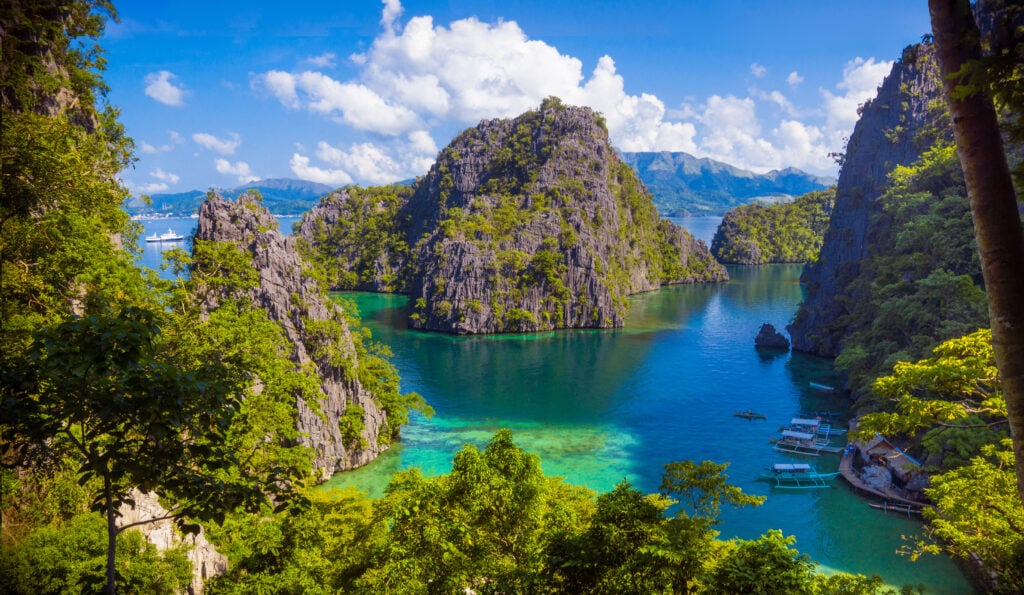
The longest island in the west of the Philippine archipelago, Palawan is the wildest, most unspoilt and least populated of the archipelago. With its beauty and natural assets - rocky mountains, lush forest and seabed - it has become one of the most popular Philippine islands for tourists. Fine sandy beaches, turquoise lagoons, sumptuous underwater fauna. Suffice it to say, this destination is well worth the detour. Nicknamed "The Last Frontier" because of its geographical configuration, Palawan's sparse population and appearance of an untapped paradise make it the Philippines' wild treasure par excellence, a veritable ecological reserve, covered in impenetrable, untouched tropical jungle. It is appreciated for the beauty of its landscapes and the splendour of its seabed.
2. El Nido and the Bacuit archipelago
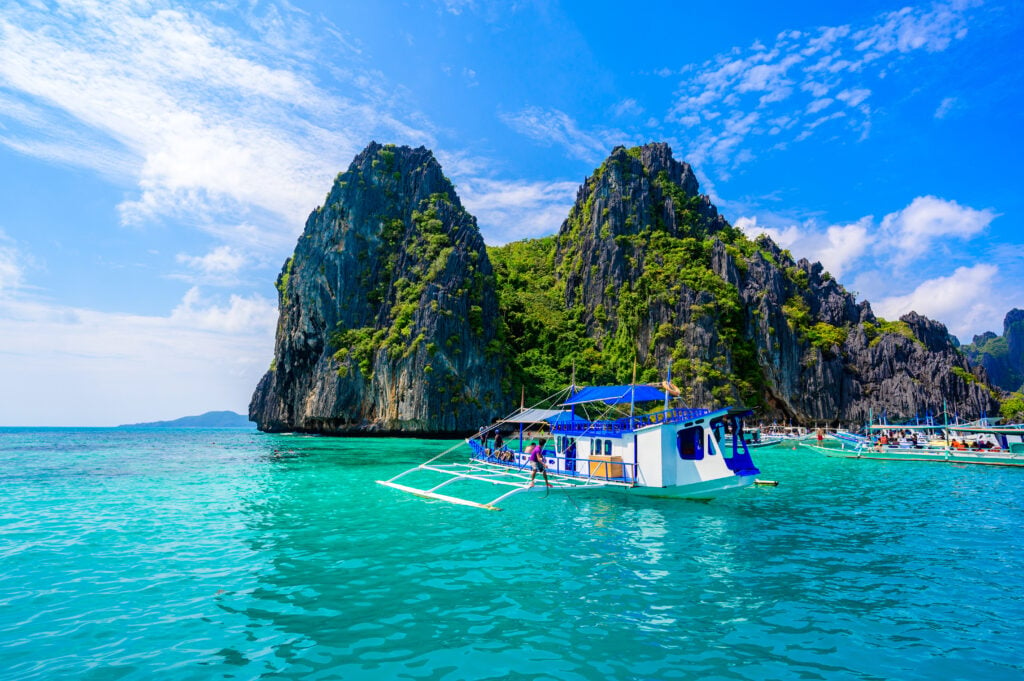
In Palawan, the village of El Nido is known as the departure point for the Bacuit archipelago. Located 240 km north of Puerto Princesa, El Nido is named after the swallow nests (salanganes) found in the excavations of the limestone cliffs. El Nido is actually home to 18 small farming and fishing villages. There are hardly any unspoilt beaches left in El Nido itself, but you can still enjoy the unrivalled sunsets while sipping a cocktail in one of the small seaside restaurants. From El Nido, you can reach the paradisiacal Bacuit archipelago. A place of incredible natural beauty, this archipelago boasts imposing limestone and karst cliffs. The scenery is reminiscent of Krabi, Phang Nga Bay and Koh Phi Phi in Thailand... A banca glides between forty-five islands and islets surrounded by an immensity of water ranging from turquoise to emerald green to deep blue. These islands, with their sometimes impressive cliffs, are home to incredible lagoons, small rainforests, caves and an abundance of underwater life, delighting diving enthusiasts and lovers alike, who have made it one of the 25 best destinations for a honeymoon. We love it here!
Book your guided tour of the island's lagoons and beacheshere : you'll spend the day exploring paradise islands such as Bacuit Bay, the Grand Lagoon, Seven Commandos Beach and the Secret Lagoon!
3. The Underground River of Puerto Princesa
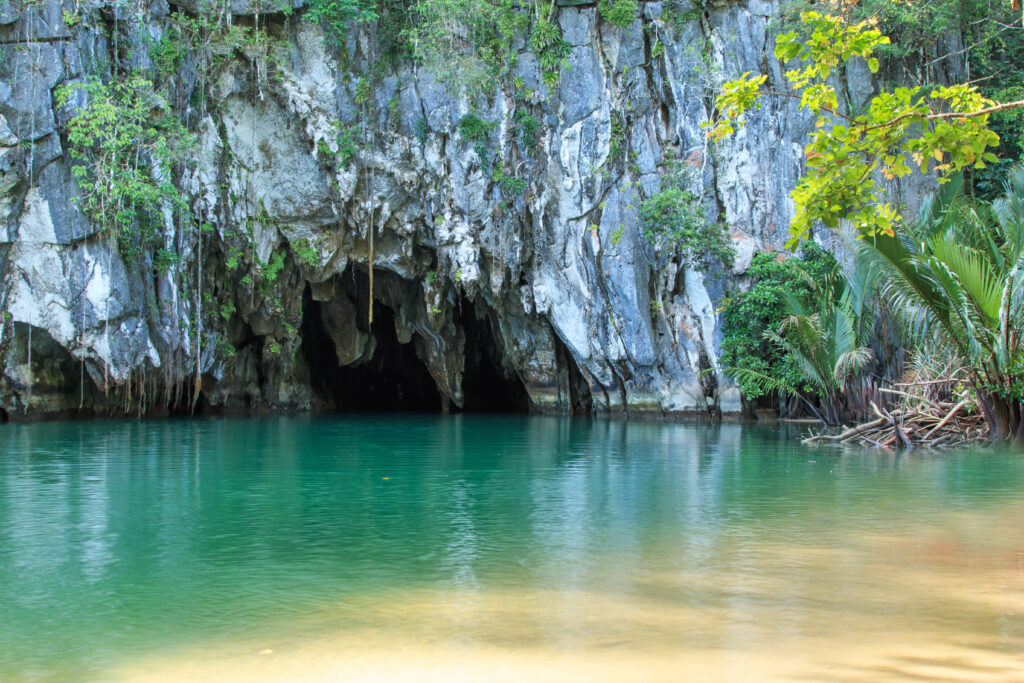
The unique and exceptional Underground River of Puerto Princesa has been a Unesco World Heritage Site since 1999 and was designated one of the New Seven Wonders of Nature in 2012. The caves are among the most spectacular in the world, and can be explored by canoe. An extraordinary experience guaranteed! Accompanied by a guide, visitors are taken aboard a small boat for a 45-minute trip down the river. Equipped with a flashlight, the guide paddles along behind the boat, joking about the shapes of the stalagmites and stalactites. When it rains, the waters become murky, even muddy, which can make the visit less enjoyable. We therefore recommend choosing a dry day if possible. Explore Puerto Princesa's underground river and admire Palawan's natural beauty by booking your day trip your day trip!
4. What to do in the Philippines Trek the Mayon volcano
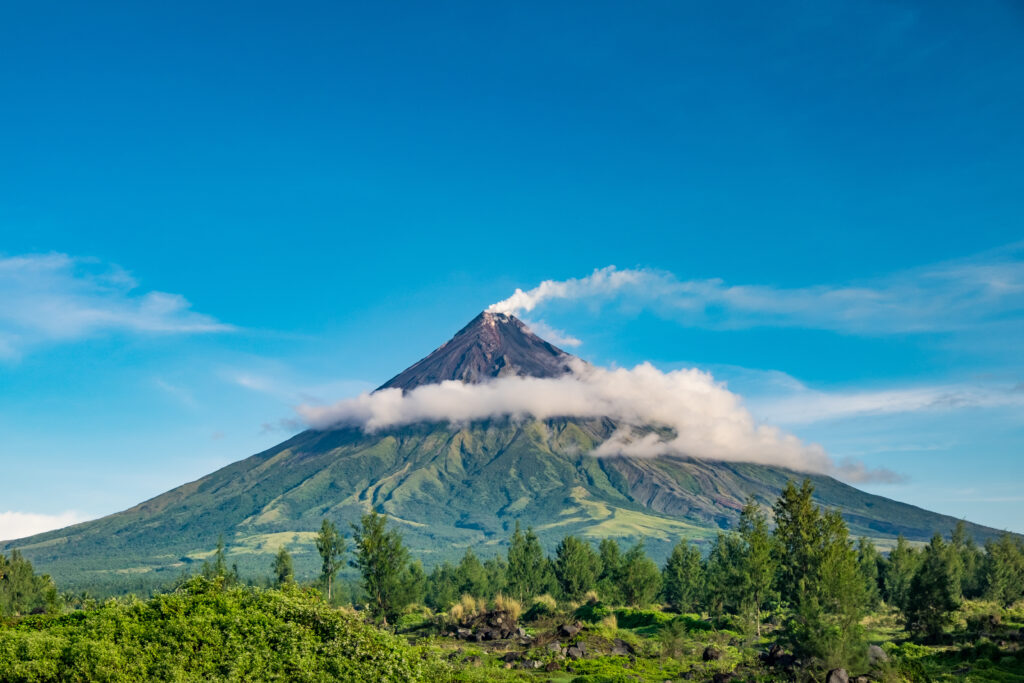
The Mayon volcano is without doubt the most majestic volcano in the Philippines. The name "Mayon" originates from the word magayon, meaning "beautiful". Nestled between the towns of Legazpi and Tabaco, Mount Mayon ranks among the country's most active volcanoes. It is best known for its perfect cone, which emerges from lush vegetation. It is reminiscent of Japan's famous Mount Fuji. Reaching an altitude of 2,453 metres, its crater emits smoke continuously, while lava carves gullies along its slopes, giving this sleeping giant an imposing presence to say the least. A trek can be organized to tackle this unique silhouette, but you can also choose to book this mountain bike tour of the Mayon volcano : an unforgettable experience!
5. Taal Lake and its volcano
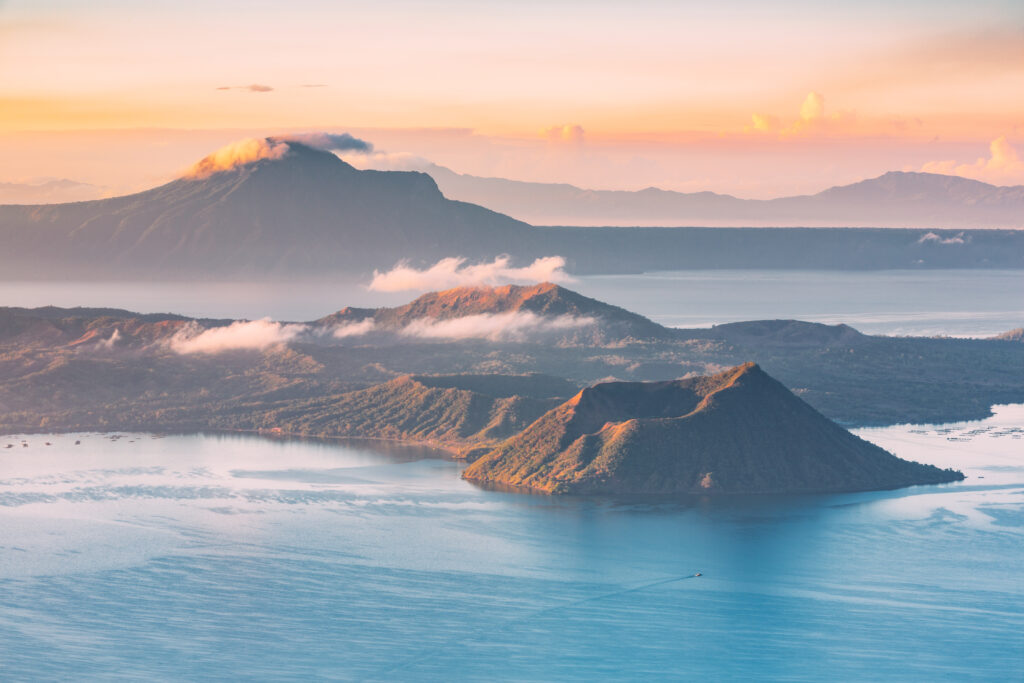
Taal volcano,one of only 10 active volcanoes in the world, is characterized by its vast caldera measuring 15 km by 20 km, home to Lake Taal, the country's third largest body of water. The volcano's historic eruptions have been recorded in the center of the lake, on the volcano island. It is recognized as the world's smallest active volcano. Recently, between 2020 and 2022, the volcano erupted again, accompanied by intense seismic activity, leading to the evacuation of thousands of people. Conditions permitting, the volcano remains a major tourist attraction. A one-day excursion takes you all the way around. A one-hour climb to the top of the crater offers a panoramic view of the inner lake and its fumaroles. The crater can also be explored on horseback.
Click here to book a boat trip across Lake Taal and get a close-up view of the smoking volcano!
6. The Chocolate Hills
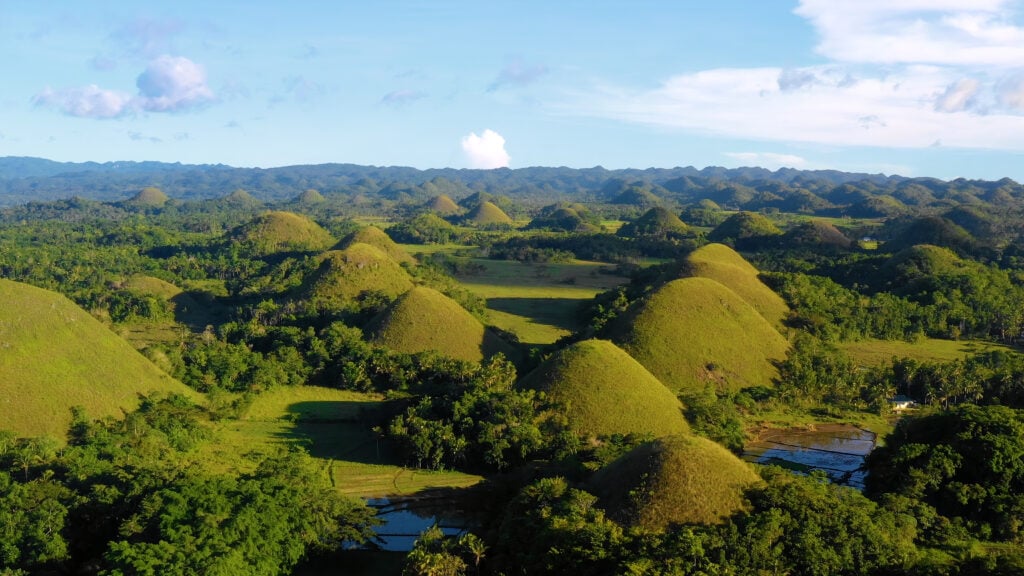
The Chocolate Hills are one of the Philippines' most emblematic tourist attractions. There are 1,268 hills, ranging in height from 60 to 120 meters. The vegetation of these geological formations takes on a chocolate hue during the dry season, from December to April, due to the drought that prevails at that time. Otherwise, legend has it that these hills are the tears shed by a giant. It's true that these domes have an almost mystical aura, and it's easy to imagine them inhabited by hobbits! Book your Chocolate Hills guided tour right here !
7. What to do in the Philippines Discover Banaue
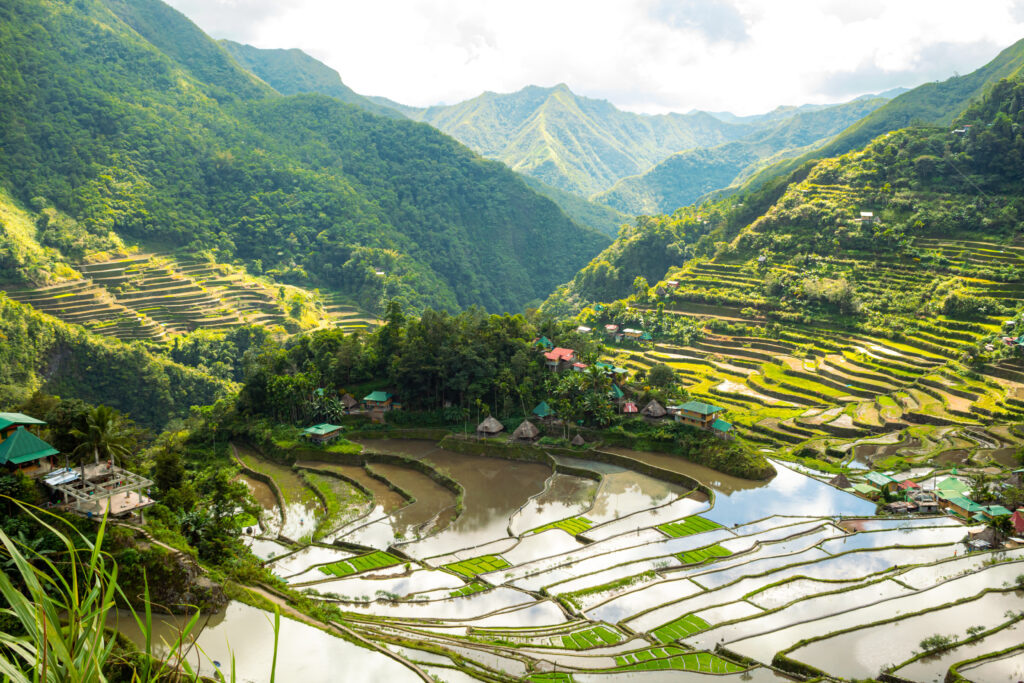
Perched on the edge of a cliff 1,200 meters above sea level, Banaue offers a picturesque setting with the mountains as a backdrop. Despite the boom in tourism, daily life here seems frozen in time. The real value of Banaue lies in its environment, surrounded by magnificent rice terraces that stretch as far as the eye can see. At dawn, when mists caress the mountains, or at sunset, when rosy hues create halos on the mountain tops, the mysterious atmosphere of the place is fascinating. And to top it all off, the local people are particularly welcoming! For those with more time on their hands, exploring the rich Ifugao culture can be an enriching experience.
8. Coron Island
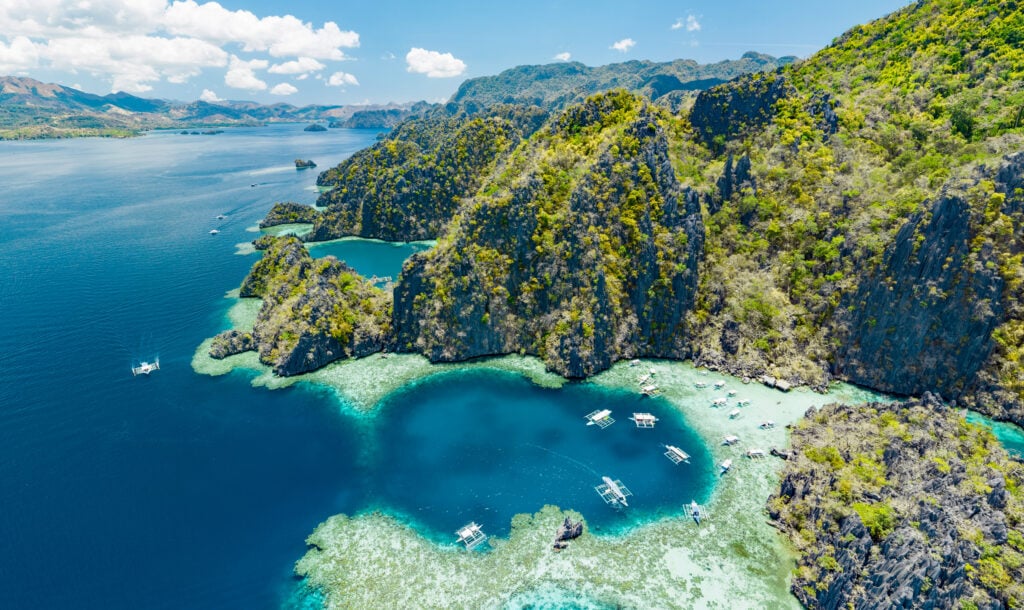
Coron Island undoubtedly stands out as one of the most magnificent islands in the Philippines, offering an exceptional rocky landscape of karst cliffs up to 600 meters high. Some 2,000 indigenous Tagbanuas live on this island in the province of Palawan, where tourists are only allowed in certain areas. The island's interior boasts emerald lakes that are true natural wonders. Two of these lakes, Kayangan (reputed to be the purest in the Philippines) and Barracuda, are accessible to travellers. Kayangan's memorable swim can be disrupted by crowds, so it's best to get there early in the morning. Barracuda Lake, meanwhile, welcomes divers looking for barracudas. Along the coast, picturesque beaches and coves invite you to relax. Coron Island can be discovered by island hopping, and hotel facilities are rare on this protected island. Coron Bay is prized by divers from all over the world for the wrecks of Japanese ships sunk by the Americans in 1944. Discover the beauty of Coron by book this guided tour which will take you swimming on the island's beaches, admiring the magnificent coral and tropical fish and lunching in a traditional hut.
9. What to do in the Philippines Visit Vigan
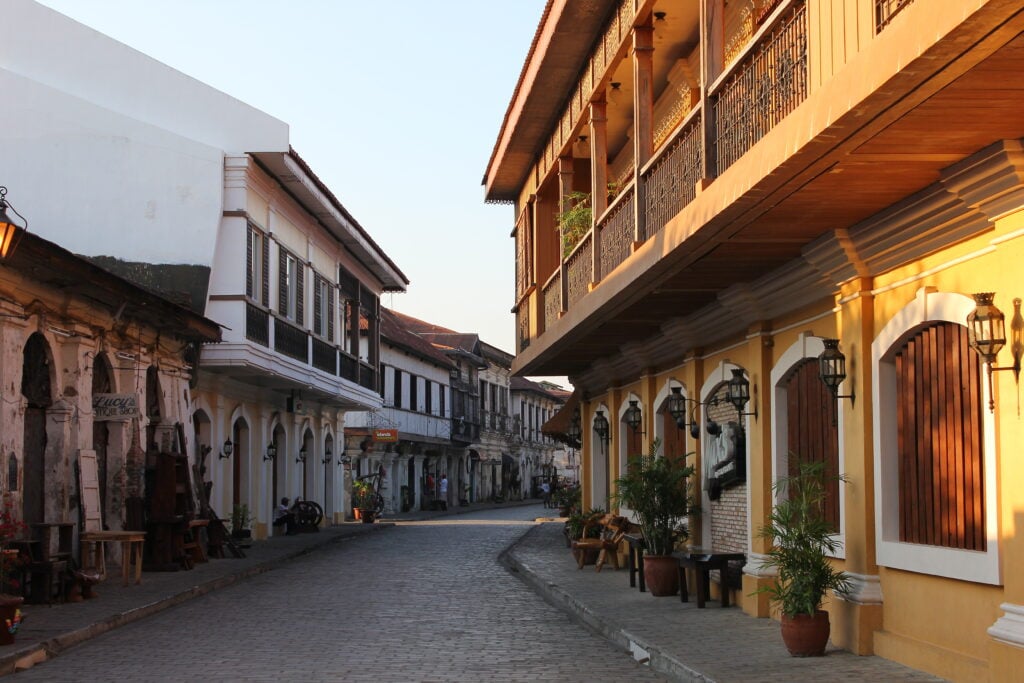
Located 130 km from San Fernando (La Union), in the northwest of Luzon, where the colonial influence is well marked, Vigan is a city of great architectural interest. Indeed, it has been declared a World Heritage Site by UNESCO as the best preserved example of a Spanish colonial town in Asia. Nicknamed the "great village of the 18th century", Vigan offers a horse-drawn carriage ride through its streets, dotted with 150 wooden and stone castles. Historically, the town was also a crucial stop on the Silk Road, linking Asia, Arabia and Europe, where gold and timber were once traded. Vigan's unspoilt beauty can be attributed in part to the fact that the town was not bombed by the USA during the Second World War, Japanese troops having left the city shortly before. A stay of two or three days will allow you to fully discover this town, which we really appreciate!
10. Camiguin Island
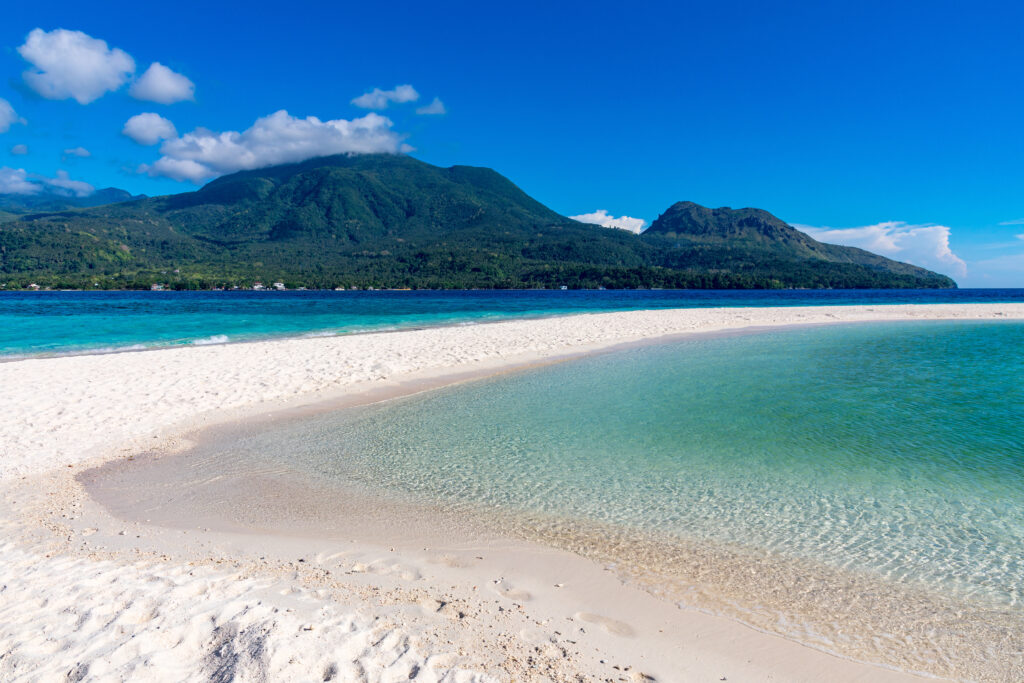
Camiguin Island, nicknamed "the island of seven volcanoes", is a paradise for scuba diving and land-based activities. The locals also call it "Come Again", an expression that sums up the irresistible desire of anyone who stays here to come back again. The locals are particularly welcoming and smiling. For a Filipino, mentioning Camiguin will inevitably evoke lanzones, a local fruit similar to lychee, the sweetest in the archipelago. The Lanzones Festival takes place every year in the third week of October. Located in the Bohol Sea, Camiguin is about 54 km southwest of Bohol's Chocolate Hills and 90 km north of Cagayan de Oro airport. Although small, with an area of just 238 km², the island is well worth a few days' visit, even if it can be explored in a day.
11. Mount Pinatubo
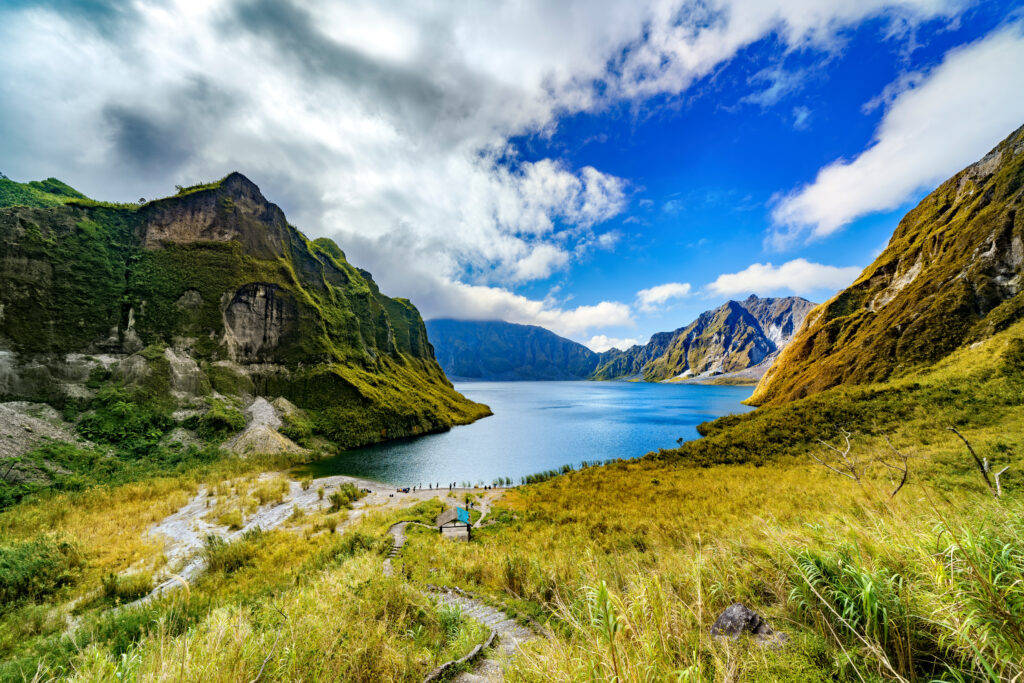
After a slumber of more than five centuries, Mount Pinatubo, located on the island of Luzon northwest of Manila, began to show signs of awakening in April 1991, before experiencing a powerful eruption two months later. Clouds of ash obscured the atmosphere for several days, making the air difficult to breathe. Ash fallout also wreaked havoc on crops located downwind, as did the lava flows that poured down from the summit into most of the surrounding valleys. Nowadays, Mount Pinatubo has become a real asset for the region, offering exceptional hikes to visitors who want to work off their energy(go here to book your hike on Mount Pinatubo!) Don't worry, it's obviously being monitored, like all other volcanoes, by PHIVOLCS, the government agency in charge of studying volcanic phenomena and forecasting eruptions.
12. What to do in the Philippines Siargao Island
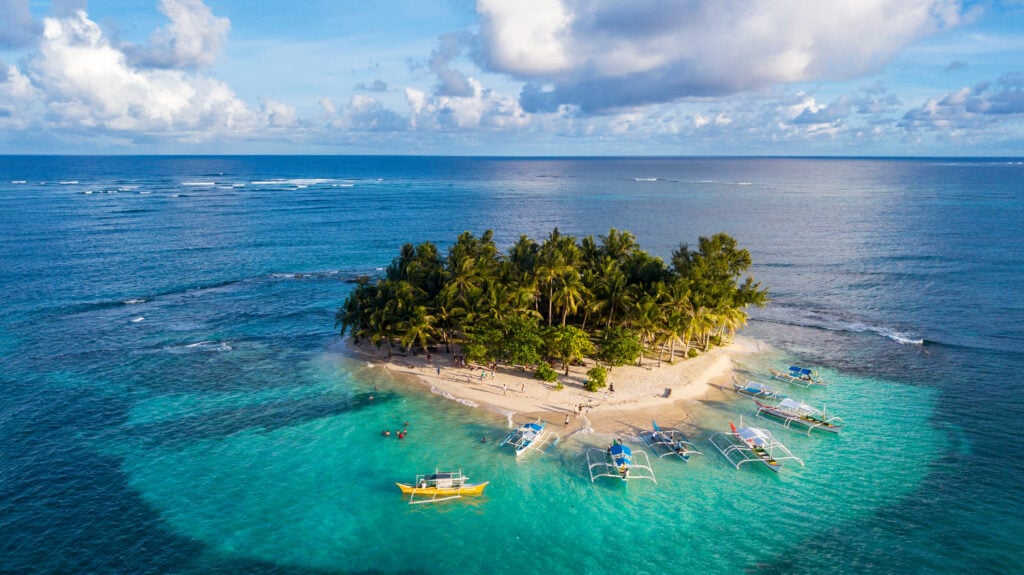
Siargao Island is renowned as the surfing capital of the Philippines, although you obviously don't have to be a seasoned surfer to appreciate the incredible scenery and natural beauty of this island preserved from mass tourism. With its white sandy beaches, endless palm trees, lagoons, islets and mangroves, Siargao is a real little paradise. From the main town of Dapa, a road leads south-east to General Luna, where most of the island's tourist accommodation is located, close to magnificent palm-fringed beaches. General Luna is also home to the legendary Cloud 9, a popular surf spot that hosts international competitions. For landlubbers, the island's interior is densely forested with waterfalls and mangroves. Finally, the island is renowned for its lively nightlife, concentrated mainly around General Luna. Often compared to Bali, but without the crowds, Siargao offers a surf and bohemian atmosphere. A real favorite!
13. Batanes Islands
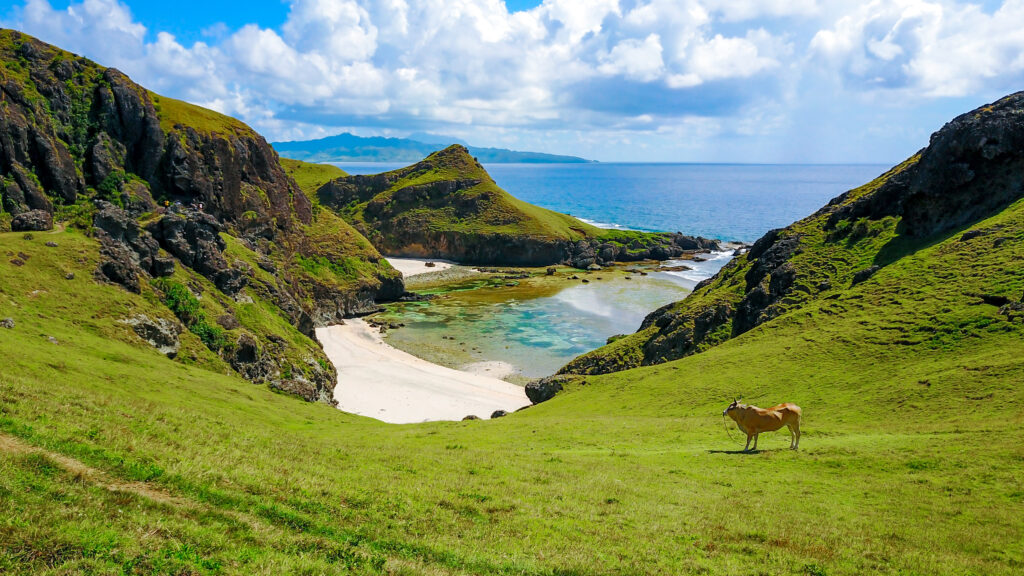
Situated 160 km from the northern tip of Luzon, these islands are the smallest province in the country, and the lush green fields and different climate make them feel very much like the Philippines. Even the language is different! The inhabitants, the Ivatans, speak a language of the same name, very different from Tagalog or other dialects. The appearance of the houses is reminiscent of Gallic villages: limestone walls set into the ground and topped with thatched roofs. The dwellings are adapted to the typhoons that sweep through here every year between June and September. April and May are the best months to visit the Batanes islands, a destination as surprising as it is picturesque, reminiscent of New Zealand or a remote corner of Brittany!
14. What to do in the Philippines? Scuba diving!
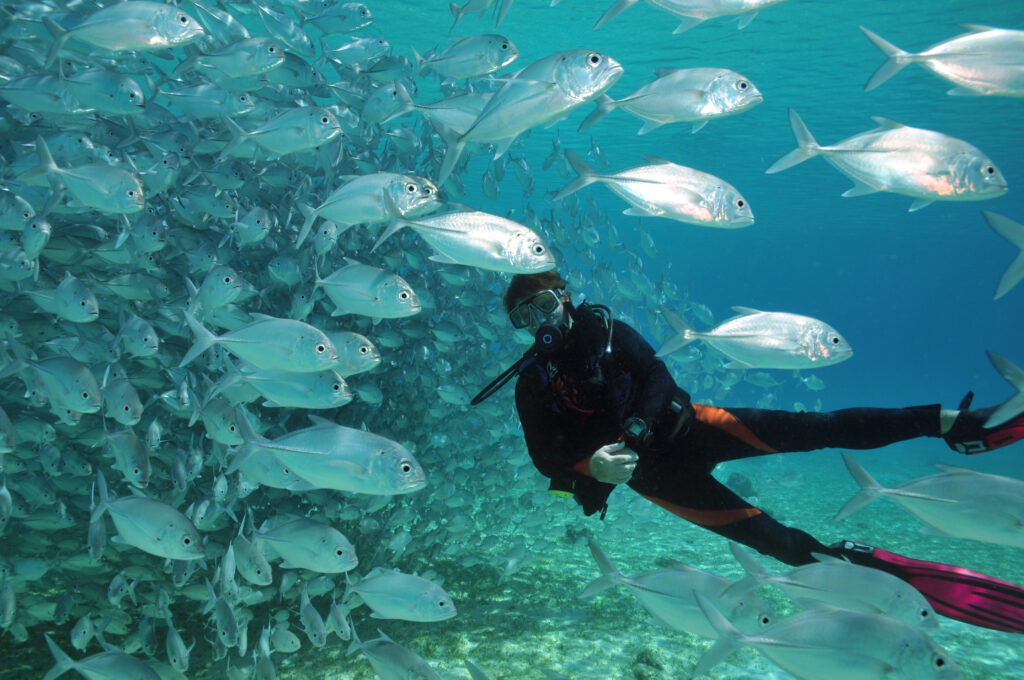
An Eldorado for scuba divers, the Philippines boasts some exceptional underwater treasures. From shipwrecks in Coron Bay, one of our top 10 most beautiful diving spots in the world, to schools of sardines in Moalboal, whale sharks in Tubbataha Reef (the Philippines is one of our top 10 places in the world to swim with whale sharks), giant turtles on Apo Island, splendid coral reefs scattered throughout the archipelago and a multitude of other colorful fish, the possibilities are endless. Whether it's for an afternoon or several days, as an introduction to diving or with a view to obtaining a diving certificate, there's plenty to do. In recent years, diving clubs have sprung up all over the archipelago to offer divers of all levels unusual and unforgettable experiences, in complete safety, in the heart of hundreds of exceptional sites. So strap on your tanks and immerse yourself in the incredible seabed of the Philippines!
15. Try the localcuisine
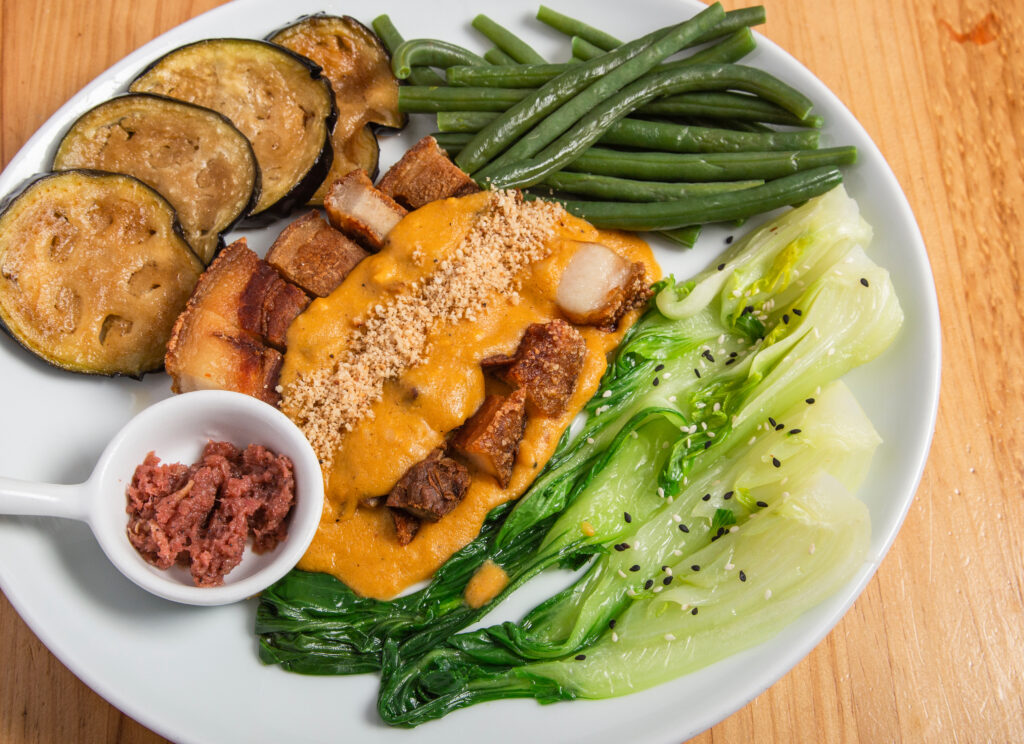
A unique blend of Asian and Hispanic flavors, with a touch of American influence, Philippine cuisine is little known in France, yet offers a number of delicious and colorful specialties. This volcanic archipelago makes generous use of tasty vegetables and fruits, varied spices and condiments, meat, poultry, a host of fish and seafood, not forgetting rice, the cornerstone of local cuisine. Nearly 500 years of Spanish presence have also left their mark on Asia's largest Catholic country, where suckling pig, chorizo and paella are beloved. Not to mention ancient trade links with China, which introduced noodles, soy sauce, cabbage, etc. to the archipelago. Don't hesitate to come and taste some of the world's most unusual culinary specialities!
What to do in the Philippines in 10 days?
In 10 days in the Philippines, you're going to have to make some choices. The first option is to opt for the Palawan archipelago, where you'll be able to indulge yourself for a week after a day or two in Manila. Alternatively, after landing in Manila and a day of sightseeing, including the historic center and the Chinese cemetery in Makati, you can head off to Banaue for a hike through the rice fields, followed by the colonial town of Vigan. Then on to Puerto Princesa in Palawan, with a stopover in Manila, before heading for El Nido. A short banca (traditional Filipino boat) cruise will take you from island to island in the archipelago to discover some truly heavenly lagoons. Finally, what better way to end your (all-too-short) stay in the Philippines than to put down your towel in the Bacuit archipelago for a bit of idleness and snorkeling. Just the thing to perfect your tan before heading back to Manila... and then France.
What's the approximate budget for 2 weeks in the Philippines?
The Philippines is a generally inexpensive destination compared to France, of course, but compared to other Southeast Asian countries, it's rather expensive. Transportation in particular is a major cost factor: count between 30 and 100 euros for an internal flight, and between 10 and 40 euros for a ferry ride, or special activities such as diving (between 50 and 400 euros) and organized tours. The average budget per day depends on the expectations of each traveler, the period and the places visited. For two weeks in the Philippines, you'll need to budget at least €1,300 to €1,800 with return flights (including €300 to €600 on site) for the smallest budgets, and up to €5,000 to enjoy the luxury resorts..
Tempted by a vacation in the Philippines? Take advantage of a discount by booking your travel insurance here , and leave with peace of mind!


